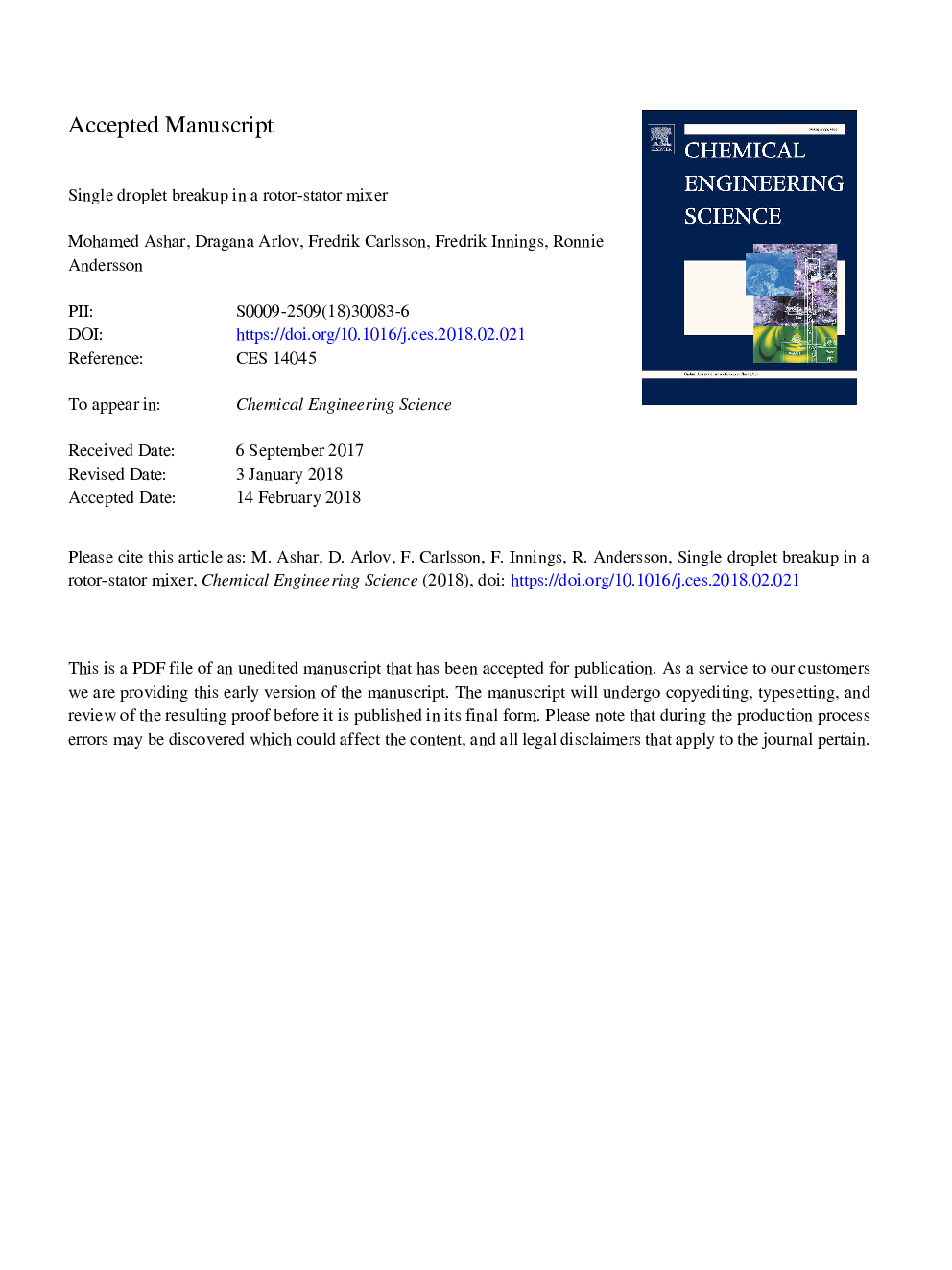| Article ID | Journal | Published Year | Pages | File Type |
|---|---|---|---|---|
| 6588608 | Chemical Engineering Science | 2018 | 48 Pages |
Abstract
This study presents measurements of droplet transport inside a rotor-stator mixer under turbulent flow conditions and contributes to the understanding of the droplet breakup phenomenon. The measurements contain unique information on droplet breakup down to the limit of equilibrium droplet size. The experimental setup includes a custom-built rotor-stator mixer that provides optical access to the mixing region. High-speed camera imaging is used to study droplet stability and breakup due to turbulent inertial stress at different operating conditions. The analysis reveals when, where, and how the droplets break up inside the rotor-stator mixer. Analysis of the breakup location reveals that droplet breakup mainly occurs in the downstream region of the stator and inside the emanating jets. Prediction of the flow field and turbulent kinetic energy dissipation rate from CFD simulations explains the propensity of droplet breakup at different locations in the rotor-stator. It is found that both the average time for droplet-vortex interaction and the distribution increases with the size of mother droplets, and a model is proposed that explains the results fairly well. Measurement of the breakup probabilities reveals a monotonically increase from zero probability at a low We-number to approximately 50% probability at Weâ¯>â¯4. The number of fragments formed upon breakage depend on how far the droplets are from equilibrium size and it is found that the probability for multiple fragmentation dominates even close to the equilibrium size.
Related Topics
Physical Sciences and Engineering
Chemical Engineering
Chemical Engineering (General)
Authors
Mohamed Ashar, Dragana Arlov, Fredrik Carlsson, Fredrik Innings, Ronnie Andersson,
